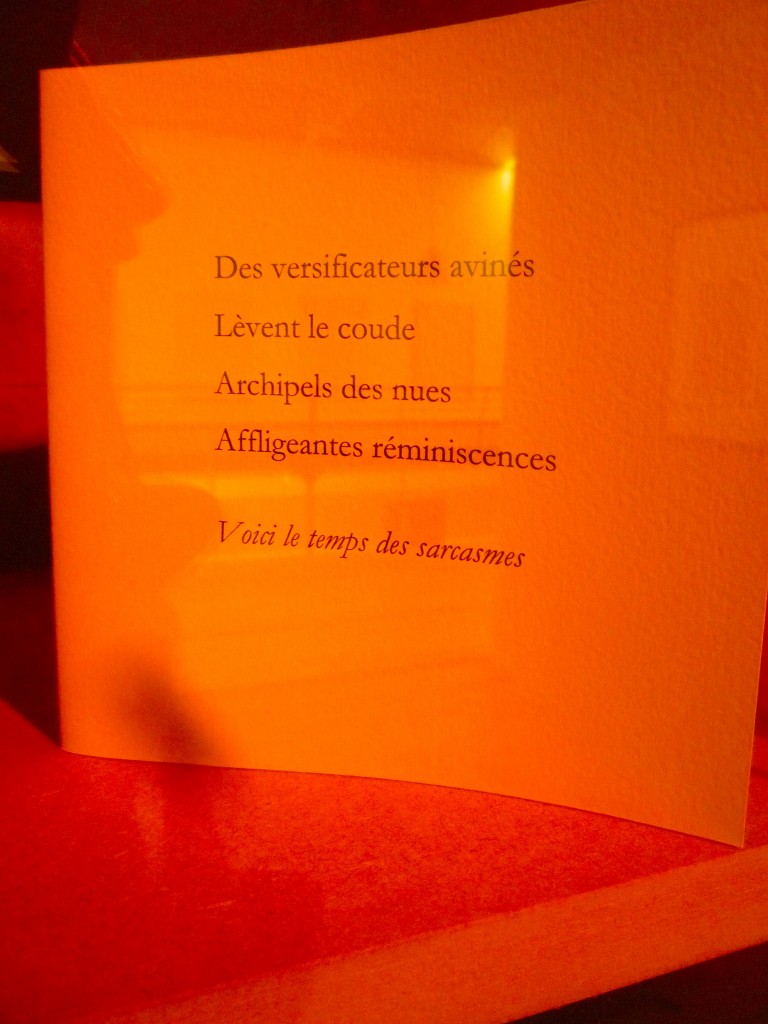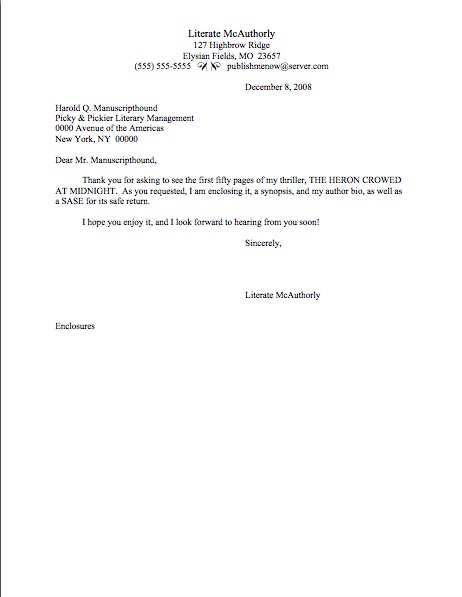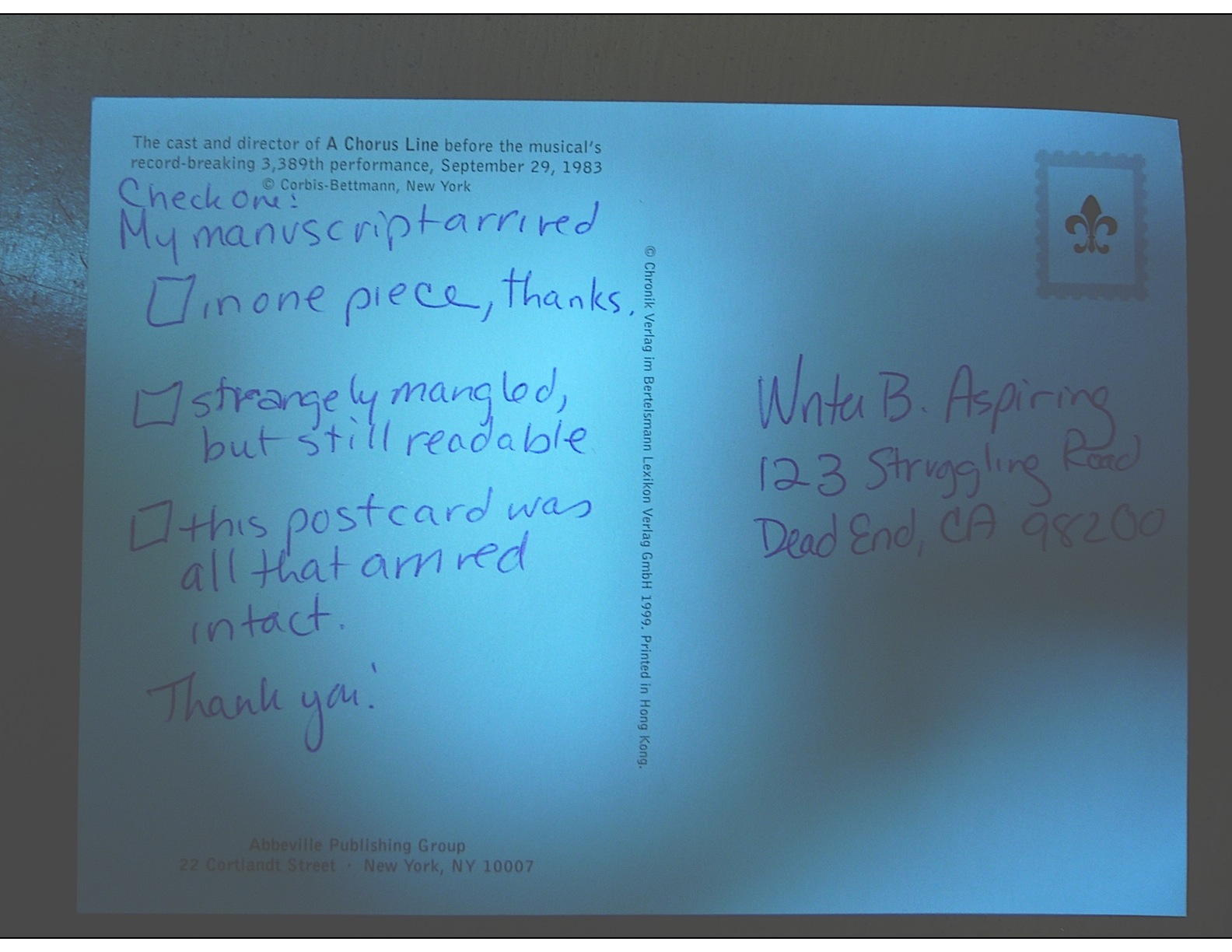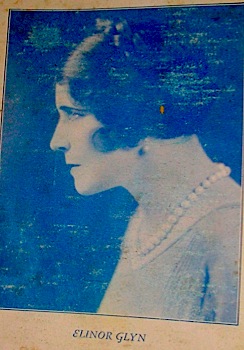Had you noticed, dear readers, that for the last few posts, I had begun merging my SIOA (Send It Out, Already) series with my ongoing quest to clear out my ever-burgeoning readers’-questions-to-blog-about list? We like to multitask here at Author! Author!
Especially when there are just a few days left before much of the NYC-based publishing industry (and, by extension, a hefty percentage of US-based agencies) shift into end-of-the-year slow-down mode. So if you’ve been holding on to manuscript pages requested weeks or months ago, or have been gearing up for an autumn querying blitz, this week would be the time to hit those SEND buttons and/or pop things in the mail.
That being said, when aspiring writers speak of turn-around times, they usually are not talking about how long it takes them to get requested materials out the door, but how long it takes agents they have queried or to whom they have submitted to respond. Over the last five years, I’ve heard so many questions/complaints/laments on the subject that when I first started this blog, I used to deal with the subject every other month, just to set readers’ minds at ease.
The questions tend to run along the lines of this:
My question has to do with agent contacts. At Conference X in 2007, I met Maura M. McLiterate,
pitched her, and she asked me to contact her when I had a finished manuscript…So finally, after finishing
the manuscript this summer, I sent her a cover letter reminding her of our conversation with the stuff she asked for.That was last October 10. Haven’t heard anything back. Given that she requested the follow-up, does the 4-6 weeks “wait time” still make sense? I have a handful of other agents and editors who asked to be contacted, trying
to figure out how to manage this. Advice welcome.
Some of these issues sound a trifle familiar? Good; that means you’ve been paying attention to this series, so feel free to play along at home as I run over this case study.
The Composite Submitter raises several intriguing issues here, all relating to the burning question of how long is too long in the publishing biz:
*How long after a successful pitch may one take up an agent’s offer to submit materials and still continue them requested? (For an explanation of the vital difference between requested and unrequested materials, see this earlier post.)
*How long is a normal turn-around time at an agency for requested materials?
*Does a long gap between pitch or query and submission necessarily extend that turn-around time?
*Does a submission based upon a face-to-face pitch typically receive swifter attention from agents than one based upon an impersonal query letter?
The short answers to these questions are, in the order asked: it depends, it depends, it depends, and it depends.
I imagine, clever writers that you are, that you would like to know upon what it depends in each instance, but that’s not really a question that may be answered accurately on a theoretical basis — because (wait for it) it all depends.
I know that sounds like a flippant response to a serious question (or, more accurately, to four serious questions), but honestly, I don’t mean it to be. How long an agent is going to be willing to wait to see requested materials depends upon a lot of factors, potentially ranging from how the book market has changed in the interim to whether the agent is still representing that type of book to what authors an agent may have lost lately (agented writers move around more than one might think, sometimes from project to project) to whether the agent has just had a baby.
If that seems like too many unknown factors for a rational person to take into strategic consideration, you’re absolutely right: second-guessing is frequently impossible. Given that realization, would it frighten you too terribly to learn that the list of factors above represents just a tiny fraction of the possible influences over how long an agent may take to respond to a submission?
So my initial answer was quite accurate: in all of these cases, the answer depends on a lot of factors, virtually none of which a writer on the other side of the country (or other side of the world) may anticipate.
Each individual submission is thus to a certain extent the plaything of outside forces. Before that notion depresses anyone too much, let’s return to Composite Submitter’s specific case, to see if it sheds any light upon what an aspiring writer can and cannot control in a submission situation.
First, to place this in as empowering a light as possible, CS did something very, very right in his submission to Maura. Actually, he did something else pretty smart, too. Anyone care to guess what these bright moves were?
If you said that he sent a cover letter along with his submission, reminding her where they had met, what he had pitched to her, and that she had asked him to send the enclosed materials, give yourself a gold star for the day. And make it three gold star and a firecracker if you immediately added that he was right to tell her when he pitched that he had not yet completed the manuscript, so she would not expect it to arrive right away.
Your mother was right, you know — honesty, contrary to popular opinion, often genuinely is the best policy.
Why was reminding Maura how much time had elapsed strategically smart? It prevented her from thinking, “Who?” when she saw the submission marked REQUESTED MATERIALS. More importantly, it minimized the possibility of her thinking, “I don’t remember telling this guy to send anything.”
All of which begs the question: was over two years too long for CS to wait before submitting the materials Maura requested?
You all know the refrain by now, don’t you? Chant it with me: it all depends.
Normally, I would advise trying to get requested materials out the door within six months, if it is humanly possible. Longer than that, and an aspiring writer runs the risk not only of his query or pitch not being remembered (which is probably going to happen far sooner than that, but hey, agents keep records of this sort of thing) but also of the agent’s individual tastes and market trends changing. At minimum, a much longer delay will send a pretty unequivocal message to the agent in question to the effect that the submitter is slow at responding to requests, always a bit frustrating to someone in the business of mediating between authors and publishing houses.
Of course, you could always take your chances and send a much-delayed submission anyway; technically, requests for material don’t expire. But after a year has passed, the risk of any or all of the conditions above’s having changed becomes so high that I would advise sending a follow-up letter, confirming that the request is still operative.
CS, however, was savvy enough to protect himself against the liabilities of a long delay between request and submission: he told Maura up front that he was not yet finished with the manuscript. This gave her the clear option of saying either, “Well, then you should wait and query me when it is finished,” (a popular choice, particularly for novels) or what she actually did say, “That sounds interesting — when you’re finished, send me this and this and this.”
For insight into why this worked, see my earlier comment about honesty.
Assuming that Composite Submitter need not worry about Maura’s having lost interest in his book while he was finishing writing it — again, a fairly hefty assumption, but certainly worth his testing practically — is he right to worry that he did not hear back from her right away?
I’m exceedingly glad that he brought this up, because in the weeks and months following the annual onslaught of writers’ conferences, a LOT of aspiring writers wonder about this. Naturally, everyone wants to hear back right away, but how likely is that desire to be fulfilled?
Or, to put in terms common to fantasy, is it possible to pitch to an agent on Saturday, overnight the requested materials on Monday, and be signed by Friday — and then for one’s new agent to sell one’s book by the following Thursday for publication three weeks from the next Tuesday, so the author may appear triumphantly beaming on Oprah by the end of the month?
The short answer is no. The long answer, as the Vicar of Dibley used to delight in saying, is NOOOOOOOOOOO.
Just doesn’t work that way, I’m afraid. These days, it’s not at all uncommon for submitting writer not to hear back from an agent for months or — you should make sure that you’re sitting down for this, because it’s a lulu — even not at all.
Don’t let that depress you into a stupor just yet — I’ll talk a bit more about the logic behind extensive turn-around times in an upcoming post. For the purposes of today’s discussion, my point is that no, a few weeks’ worth of silence after sending off requested materials isn’t at all unusual.
Let’s get back to the specifics of CS’ situation, though, to see what else we can learn, because the long lapse between pitch and submission honestly do render his position unique — or do they? Let’s see: he pitched to Maura in 2007, then submitted (as per her request) in mid-October, 2009, either by e-mail or by regular mail. Since so much time had passed between the request and the submission, she couldn’t possibly have anticipated when he would send her the materials, and thus could not conceivably have budgeted time to read them.
Which begs the question: why did CS expect her to respond with unusual quickness after she had received them?
Because, honestly, just a few weeks would have been positively lightning speed, according to current norms. So what about this particular submission would have called for Maura to move it to the top of her reading pile — or, more probably, to the top of the Leaning Tower of Pisa that is the desk of Millicent, her agency’s in-house manuscript screener?
My guess is that from Maura’s perspective, there wasn’t any reason — but that from CS’ point of view, there undoubtedly was.
This particular differential in urgency perception between agents and the writers who submit to them is such a common one that one might almost call it classic: what probably happened here is that CS had been thinking of Maura’s request to submit whenever he happened to complete the manuscript he had pitched as inherently unusual — or at any rate as something different than the kind of request to submit materials that an agent might have made to an aspiring writer who had been pitching a completed manuscript.
As such, CS did indeed, at least implicitly, expected it to be moved up in the submission pile when it arrived, as a special situation. In his version of events, Maura would not have been patient enough to wait until he completed the book before seeing it if she hadn’t been genuinely interested, so why wouldn’t she jump on it immediately?
But from Maura’s point of view, asking him to contact her with pages after he finished writing them was not a special request — it was precisely the same request as she would have made in response to other intriguing pitches she heard at that conference.
The only difference is that she didn’t expect to receive it within a month or two of the request. As such, it would have been reasonable to expect that when CS did submit it, his submission would be treated precisely like every other packet of requested materials the agency received in mid-October.
Translation: Maura’s not having gotten back to CS within 4-6 weeks probably had far more to do with how many manuscripts were stacked up at her agency than with how long CS took to pop those requested materials into the mail.
In a way, aspiring writers should find this encouraging, or at the very least democratic: queue-jumping is actually pretty hard to do during the pitching/querying and submission process. Even if writers everywhere aren’t particularly grateful for this, I suspect that those who had submitted requested materials to Maura in July or August might find it comforting to know that she — or her Millicent — didn’t just drop whatever manuscript they happened to be reading when a new envelope arrived in the office.
So how should CS have handled it? Should he, as his question implied, assume that his previous face time with Maura meant that he should follow up with her earlier than any other submitter? And what about all of those other submitters whose work has been sliding around on Millicent’s desk for weeks and months on end — what should they do?
In the first place, take a nice, deep breath. Delays are a completely normal part of the submission process, so it doesn’t make sense to read too much into them. If CS hasn’t heard back — chant it with me now, readers — it’s likely because no one at the agency has read his submission yet.
I know: disappointingly prosaic, compared to the much more common dead-of-night submitter’s fantasy that the agent is reading and re-reading the submission in frantic indecision about whether to represent it or not. But my version is much, much more likely to be true.
In the second place, CS — and all of those other anxious submitters I mentioned a few paragraphs ago — should check Maura’s agency’s website, listing in the standard agency guides, and/or any written materials she might have sent (like, say, a letter requesting materials), to see if the agency had the foresight to post average turn-around times.
Try looking under the submission guidelines; they will often contain some mention of how long they typically take to get back to writers about requested materials. Not to toot my own team’s horn, but my agency has a simply dandy page on its website that explains not only what turn-around times submitters to expect, but the logic behind it and what a submitter who has been twiddling his thumbs for months on end should do.
Getting back to CS’ situation: before I gave him any advice whatsoever, I spent a couple of minutes checking out Maura’s website. Turns out that her agency lists an 8-week response time; not unusually long. So at minimum, CS should wait two months before sending Maura a follow-up e-mail, letter, or second copy of his materials.
I would advise holding off for a couple of weeks after that, just in case Maura and Millicent are totally swamped and touchy about it, but not for too much longer after that. If the agency has lost the manuscript — yes, it does happen occasionally, one of the many reasons that I disapprove of the increasingly pervasive practice of agents’ simply not responding at all to submitters if the answer is no — they’re going to want to know about it.
Or, to recast that from a writerly perspective, after 2 1/2 or three months, CS has every right to give Maura a gentle nudge, to double-check that his book is languishing in a stack on the northeast corner of Millicent’s desk, rather than having vanished into that mysterious other dimension where lost socks, extinct animals, and the child stars of yesteryear dwell. But it’s probably not going to be in his interest to contact her before that.
Why? Long-time readers, or at any rate those who were reading this blog as long ago as last Saturday, open your hymnals and sing it with me now: since an agented writers’ life is made up primarily of delays, CS’ exhibiting completely justified impatience at this junction might make him come across as a time-consuming potential client. Some agents like to be checked up upon, but he vast majority fall into the leave me alone and let me do my work category. And it often doesn’t take much pushiness for a writer to get labeled as difficult.
So what should CS be doing in the meantime? Submitting to everyone else who requested materials, of course — and continuing to query up a storm to generate new requests for materials.
Did I just hear yet another chorus of, “Why?” Well, unless you have actually promised an agent an exclusive look at your work, it’s poor submission strategy to submit one at a time. (For an extensive explanation of the logic behind this, you might want to check out the EXCLUSIVES TO AGENTS category on the archive list at right.) Your time is too valuable, and at this point in publishing history, agents simply don’t expect exclusivity unless they ask for it.
And if you doubt that, perhaps you should scroll back up to that earlier bit about how some agents now don’t bother to get back to writers whose submissions they have rejected.
I’m constantly meeting submitting writers who believe that the agent of their dreams will be hugely insulted if they don’t grant him an unrequested exclusive, but think about it in practical terms for a moment: if Maura’s agency habitually takes two months to get back to the Composite Submitters of this world and her agency is not unusually slow, CS could find himself waiting two, three, or even six months (it happens, alas) to hear back from every agent to whom he submits. If he does not engage in multiple submissions, he is limiting himself to just a few submissions a year.
Does that seem fair or reasonable to you? Believe me, when agents genuinely want exclusives or if their agencies require them, they’ll let you know about it.
The other thing that CS might want to do while he’s waiting is to do a bit of research on what to expect after a submission. We discuss it quite often here at Author! Author! (for those of you who are new to the blog, the WHY HAVEN’T I HEARD BACK YET? category might be a good place to start), but frankly, this is a perennial topic of discussion on almost every good writers’ discussion board.
Why invest valuable time in finding out what is happening to your fellow submitters? Well, on a purely selfish level, it would probably reduce your submission-period stress levels. Since writers are so isolated, it’s very easy to start to think that what is happening to oneself is exceptional, whereas usually, it’s just a matter of business as usual in an industry that receives literally millions of pages of submissions every year.
Comparing notes can be very empowering. Honest. So can starting to work on one’s next book.
What a submitter gnawing his nails, anticipating a response from the agent of his dreams, should most emphatically NOT do is allow the delays inherent to the submission process to bring his life to a screeching halt while he waits to hear back. Yes, it’s stressful to know that someone with the power to help you sell your work has her hands all over your work, but obsessing over what might be happening won’t help.
Trust me on this one. I know whereat I speak.
Did everyone make it through that case study feeling warm, snug, and in-the-know? Excellent. Next time, we’re going to take on a significantly more complex real-world variation on this theme.
In the meantime, keep taking those nice, deep breaths, submitters, and everybody, keep up the good work!
PS: No submitters, composite or otherwise were harmed in the research and writing of this blog post. And to set the minds of those of you who have spoken with me privately about your fears and hopes at ease, he gave his permission for me to use his story as an example. Keep taking those deep breaths, I tell you.










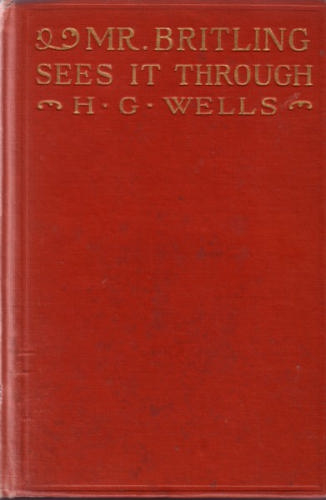

 It would be easy to dismiss the incident as the kind of thing that doesn’t happen anymore, but SLAUGHTERHOUSE-FIVE has been one of the most consistently banned books in the world ever since. Reading it was forbidden in Levittown, New York in 1975, North Jackson, Ohio in 1979, and Lakeland, Florida in 1982. The Washington Park High School of Racine, Wisconsin was barred from buying it in 1984; by 1986, only students who had written parental permission could take it out of four Racine high school libraries.
It would be easy to dismiss the incident as the kind of thing that doesn’t happen anymore, but SLAUGHTERHOUSE-FIVE has been one of the most consistently banned books in the world ever since. Reading it was forbidden in Levittown, New York in 1975, North Jackson, Ohio in 1979, and Lakeland, Florida in 1982. The Washington Park High School of Racine, Wisconsin was barred from buying it in 1984; by 1986, only students who had written parental permission could take it out of four Racine high school libraries.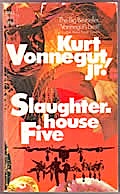 In 1987, its residence on the shelves of LaRue County High School in Kentucky was challenged, and it was banned outright in all the schools in Fitzgerald, Georgia. The following year, the school board in Baton Rouge, Louisiana was urged to remove the book from all public libraries on the grounds that it was vulgar and offensive; the year after that, parents tried to have it removed from a high school course on the modern novel because of offensive language and the portrayal of women in the book. (A book which, incidentally, contains only two substantial female characters — not that any of Vonnegut’s female characters are ever especially substantial — an ex-adult movie star kidnapped by aliens and the protagonist’s unattractive wife.)
In 1987, its residence on the shelves of LaRue County High School in Kentucky was challenged, and it was banned outright in all the schools in Fitzgerald, Georgia. The following year, the school board in Baton Rouge, Louisiana was urged to remove the book from all public libraries on the grounds that it was vulgar and offensive; the year after that, parents tried to have it removed from a high school course on the modern novel because of offensive language and the portrayal of women in the book. (A book which, incidentally, contains only two substantial female characters — not that any of Vonnegut’s female characters are ever especially substantial — an ex-adult movie star kidnapped by aliens and the protagonist’s unattractive wife.)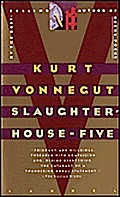 Seem like ancient history? Okay, try these on for size: in 1996, parents at the Round Rock Independent High School in Texas unsuccessfully tried to get the book removed on the grounds that it was too violent. In 1998, its presence as a summer reading option for incoming eleventh graders in Prince William County, Virginia raised quite a furor. In 2001, the book was removed from a tenth grade required reading list in Coventry, Rhode Island because a parent complained that it contained vulgar language, violent injury, and sexual content.
Seem like ancient history? Okay, try these on for size: in 1996, parents at the Round Rock Independent High School in Texas unsuccessfully tried to get the book removed on the grounds that it was too violent. In 1998, its presence as a summer reading option for incoming eleventh graders in Prince William County, Virginia raised quite a furor. In 2001, the book was removed from a tenth grade required reading list in Coventry, Rhode Island because a parent complained that it contained vulgar language, violent injury, and sexual content. Still too long ago to make you a tad nervous? In 2007, a newly-elected school board member challenged SLAUGHTERHOUSE-FIVE and eight other books on the Arlington Heights, Illinois Northwest Suburban High School District 214′s reading list. Her objection arose, she said, not from having read any of the books herself, but from excerpts she’d read on the web. In the same year — that’s a scant two years ago, people — it was also under threat of ban in a high school in Howell, Michigan. That conflict escalated to the point that the following year, the county prosecutor actually had to rule on whether distributing the book was a criminal act.
Still too long ago to make you a tad nervous? In 2007, a newly-elected school board member challenged SLAUGHTERHOUSE-FIVE and eight other books on the Arlington Heights, Illinois Northwest Suburban High School District 214′s reading list. Her objection arose, she said, not from having read any of the books herself, but from excerpts she’d read on the web. In the same year — that’s a scant two years ago, people — it was also under threat of ban in a high school in Howell, Michigan. That conflict escalated to the point that the following year, the county prosecutor actually had to rule on whether distributing the book was a criminal act.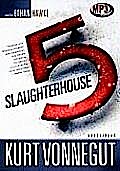 Why all the hoopla over whether high schoolers have free access to a book that, frankly, is far less sexually explicit than quite a bit of the YA currently on the market?
Why all the hoopla over whether high schoolers have free access to a book that, frankly, is far less sexually explicit than quite a bit of the YA currently on the market?
